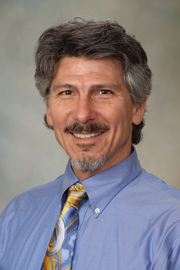
Dr. Romero’s laboratory studies ion-solute movements across cell membranes. Membrane transporters, particularly in the kidney, account for ~10% of mammalian genomes and 50% of current drug targets. The lab wants to understand and exploit this portion of the genome. Thus, it clones mammalian, vertebrate and invertebrate transporter SLC (SoLute Carrier) cDNAs and express the SLC proteins in Xenopusfrog oocytes or mammalian cells. To study SLC clones, the lab functionally characterizes the transporters using a range of strategies including electrophysiology, molecular biology, biochemistry, cell biology, whole organ, and integrative biological approaches. Generally, it examines five issues in each project: (a) genetics/gene structure, (b) transport physiology, (c) protein localization, (d) protein structure, (e) protein - protein interactions and (f) functional roles in animal models and implications for disease. Previous studies have used Drosophila to elucidate function in epithelia. Recently the lab has taken advantage of the zebrafish genetic model to gain insight into the function of mammalian genes critical for renal uptake of monocarboxylates (lactate, pyruvate, short chain fatty acids, ketoacids). Presently it has cloned and analyzed function of anion transporters in the Slc4 and Slc26 gene families as well as the newly discovered Na+ monocarboxylate transporters of the Slc5 gene family. The lab’s current projects fall into five major areas:
Source: https://www.mayo.edu/research/faculty/romero-michael-f-ph-d/bio-00095232